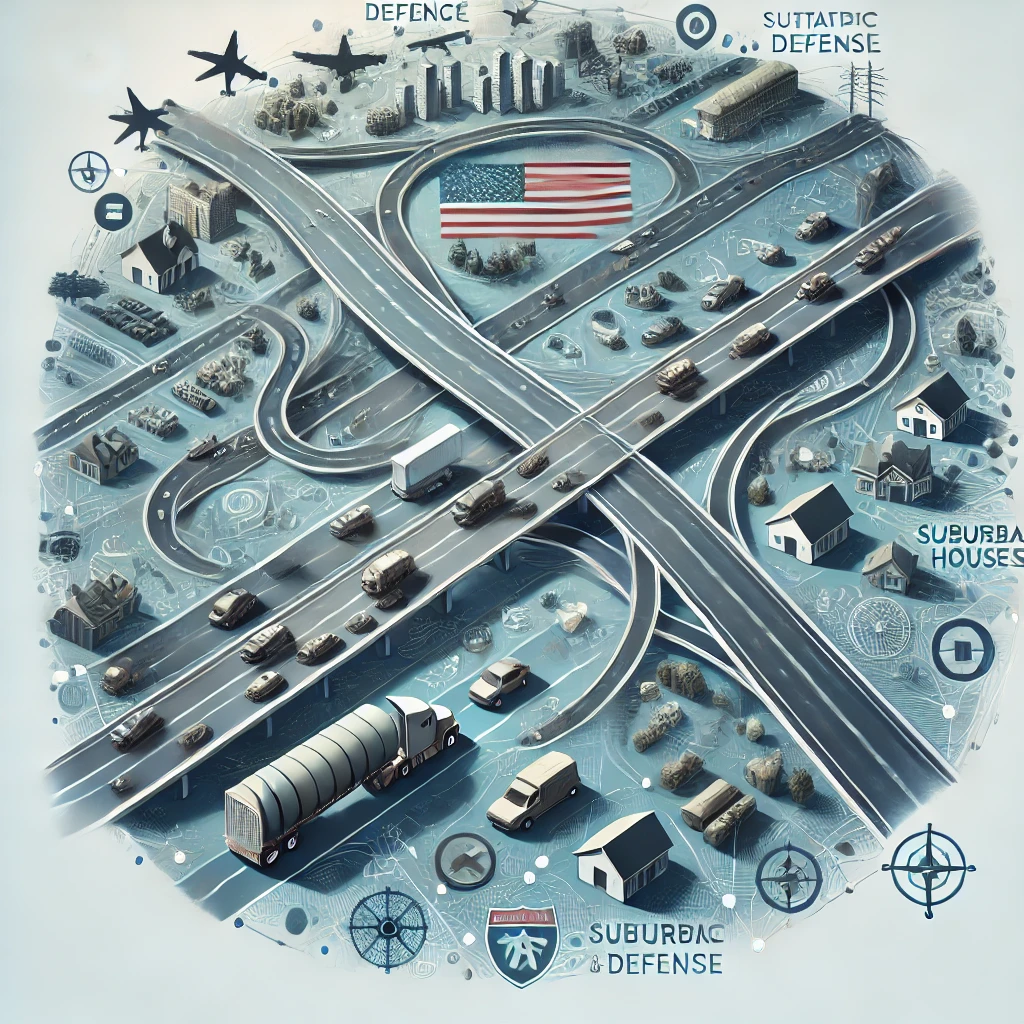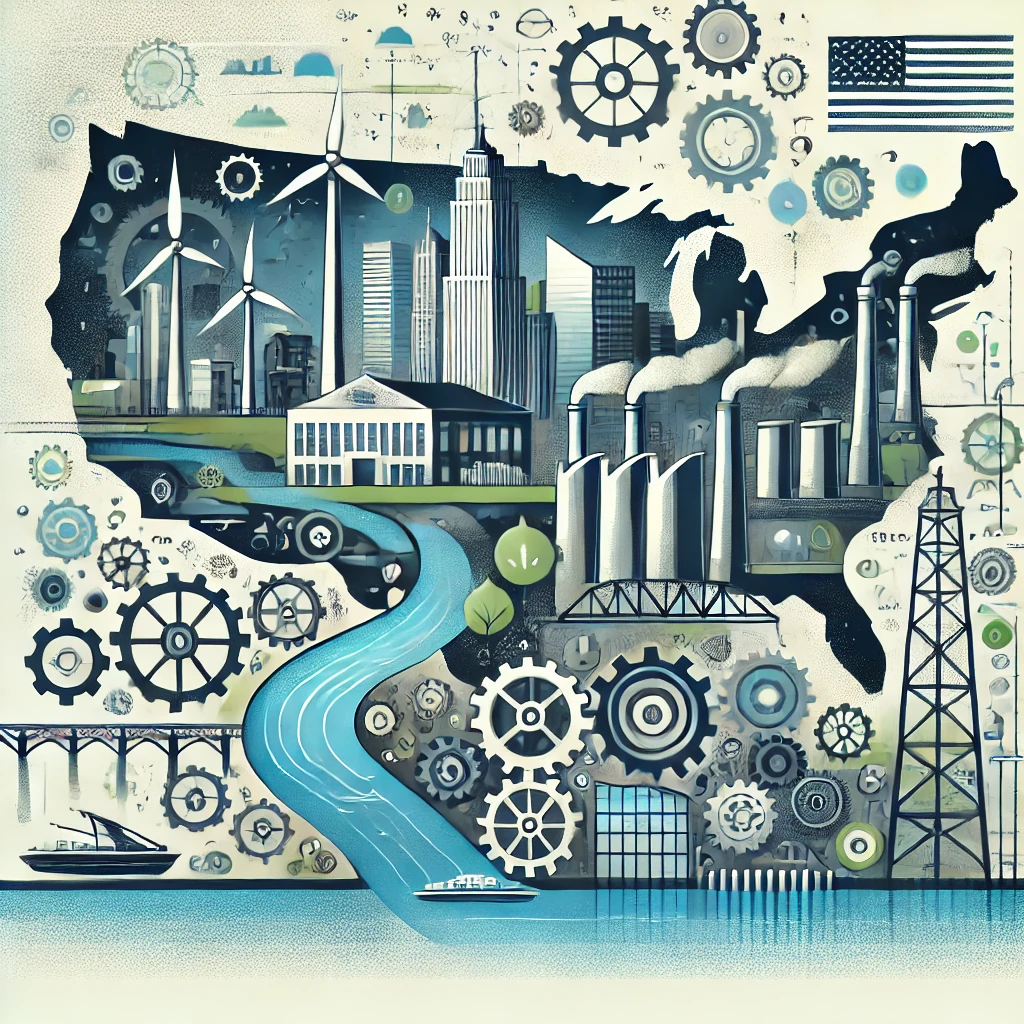The development of the U.S. Interstate Highway System is a fascinating case of infrastructure that appears to be solely about progress, connectivity, and economic growth, but it also has deep strategic and political motivations. Established by the Federal-Aid Highway Act of 1956, the Interstate Highway System transformed the way Americans live and work. However, underlying its creation were motives that went beyond simple transportation efficiency, including military strategy, economic growth, real estate development, and political influence.
1. Military and National Security Motivations
- Defense Network: The most prominent reason cited for the development of the Interstate Highway System was national defense. President Dwight D. Eisenhower, influenced by his experience with Germany’s autobahns during World War II, saw the need for a similar system in the U.S. The highways would allow for the rapid movement of troops, military equipment, and supplies across the country in the event of a military conflict or emergency (Eisenhower Library).
- Nuclear Evacuation Routes: During the Cold War era, the highways also served as evacuation routes for urban centers, ensuring a rapid exodus of citizens in the event of a nuclear threat.
- Support for Defense Infrastructure: The network connected military bases, missile sites, and defense contractors across the country, making it easier to maintain and mobilize military assets.
2. Economic Growth and Real Estate Development
- Boosting Suburbanization: The Interstate Highway System fueled suburban growth, transforming American cities and encouraging the expansion of the middle class. Developers and construction companies saw massive opportunities as the highways allowed people to live further away from city centers (History.com).
- Land Acquisition and Real Estate Speculation: Developers and landowners acquired land along planned routes before the highways were built, anticipating a surge in property value.
- Lobbying and Influence by Auto and Oil Industries: The auto and oil industries lobbied aggressively for highway construction. These industries, which stood to profit from increased car sales and fuel consumption, supported federal funding for highways over other forms of transportation (NPR).
3. Political Influence and Control
- Federal Power and Control Over States: By funding and managing the interstate system, the federal government asserted more influence over state infrastructure policies. The highways became a way for the federal government to enforce regulations and standards (U.S. Department of Transportation).
- Economic Stimulus and Political Gains: Politicians leveraged the highway system as an economic stimulus tool, gaining political support from constituents by promising jobs, development, and investment.
4. Displacement and Social Impact
- Displacement of Urban Communities: The construction of highways through urban centers led to the displacement of numerous communities, particularly low-income neighborhoods and communities of color. Routes were often chosen for political and economic convenience, disregarding social consequences (Brookings Institution).
- Economic Divides: The highways facilitated suburban growth, contributing to economic and racial segregation. Wealthier, predominantly white communities benefitted from the suburban boom, while poorer communities often faced decline.
5. Environmental Impact and Hidden Costs
- Environmental Degradation: The expansion of highways contributed to urban sprawl, pollution, and environmental degradation. Environmental concerns were often overlooked in favor of rapid construction (Sierra Club).
- Favoring the Auto Industry Over Sustainable Transport: Prioritizing highways over public transit infrastructure led to a car-dependent society, benefiting the auto, oil, and construction industries.
6. Strategic Use of Federal Funds and Taxation
- Federal Funding as a Political Tool: The federal government used highway funding as a political tool, influencing states to follow specific policies in exchange for access to federal dollars.
- Taxation and Revenue Generation: The funding for the Interstate Highway System came from the Highway Trust Fund, supported by federal gasoline taxes. This system ensured a continuous flow of funds for highway expansion and maintenance (Federal Highway Administration).
Summary: Strategic and Economic Interests Behind the Interstate System
The U.S. Interstate Highway System illustrates how major infrastructure projects can serve multiple strategic and economic purposes beyond their stated goals:
- National Security: Military mobility and nuclear evacuation routes were key justifications for the highways, ensuring national defense preparedness.
- Economic Growth and Real Estate: Developers, landowners, and industries like automotive and oil reaped massive profits from suburban expansion and increased car dependency.
- Federal Influence: The federal government used the highways to gain political leverage over states, regulate transportation, and stimulate economic activity.
The Interstate Highway System serves as an example of how infrastructure, while appearing as a public good, can be deeply intertwined with economic, political, and strategic motives that benefit powerful interests.
References
- Eisenhower’s Federal-Aid Highway Act of 1956 and Military Justifications
- The Influence of the Auto Industry and the Suburban Boom
- Displacement and Racial Impact of Highway Construction
- Lobbying and the Influence of Oil Companies
- Urban Sprawl and the Environmental Consequences of Highways
- Federal Power Over State Transportation Policies
- The Highway Trust Fund and Federal Gas Taxes
Discover more from Kango Anywhere
Subscribe to get the latest posts sent to your email.




